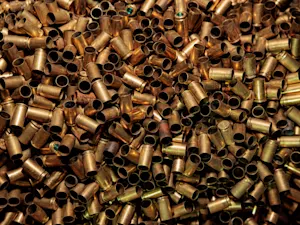
Trophy Hunter Pays Price for Killing Beloved Cecil the Lion
Cecil the lion at Hwange National Park, 2010. Photo by Daughter #3 under CC BY-SA 2.0.
In 2015, the tragic killing of Cecil the lion by Walter Palmer caused a massive outcry around the world. Cecil, who lived in Zimbabwe's Hwange National Park, was a beloved lion known for his majestic mane and friendly nature, and his death sparked anger and sadness among animal lovers and wildlife advocates.
Cecil's Backstory
Cecil the lion was first fitted with a GPS satellite collar in November 2008 when he was around 5 or 6 years old. At that time, he was a male lion entering his prime. Over the next eight years, researchers from Oxford University's WildCRU tracked his movements and learned a lot about his life. Along with Jericho, another lion, Cecil was able to claim and maintain territory in the eastern part of Hwange National Park. This area was home to the Ngweshla pride. Cecil's journey and the way he adapted to his environment made him a fascinating subject for study and a beloved figure among wildlife enthusiasts. By 2015, Cecil was a majestic, 13-year-old lion.

The Killing
Walter Palmer, a dentist from Minnesota, is reported to have paid a staggering $54,000 to hunt lions in Zimbabwe. On July 1, 2015, Palmer shot Cecil with a bow and arrow while he was exploring a farm just outside the park, a spot that Cecil often visited. Injured, Cecil wandered for 11 hours until Palmer's team found him and shot him again. Cecil was later found skinned and beheaded.

The Outrage
After Palmer was revealed as the hunter who killed Cecil, his dental clinic and his home in Minnesota became the center of protests. Animal welfare groups even vandalized a vacation home he owns in Florida. Palmer faced a wave of anger on social media, and he said he was "heartbroken" for the disruptions caused to his clinic staff, which was closed for weeks. It finally reopened in late August, but without him. He said the whole situation has been especially tough on his wife and daughter, who felt threatened by the backlash. After taking a break for several weeks, Palmer returned to his dental practice in September 2015. Authorities in Zimbabwe stated that he had the proper documentation to hunt Cecil, which meant he was never charged with any crime. When news of Cecil's death spread, Palmer claimed that he didn't know the lion he had shot was the famous Cecil, beloved by many.

Walter Palmer's clinic. Photo by Raul654 under CC BY-SA 1.0.
The Aftermath
In response to the outrage over Cecil's death, several countries decided to stop allowing hunters to bring lion trophies across their borders. Australia and France both implemented outright bans on this practice. The United States, which is the biggest importer of lion trophies, added new protections for lions under the Endangered Species Act. Now, hunters can only bring back trophies if the animal came from a country that uses the fees from hunting to help lion conservation.
Additionally, a coalition of 10 countries led by Niger proposed stronger international protections that would ban the commercial trade of African lions and their body parts. More than 40 airlines, including major companies like American Airlines, British Airways, JetBlue, Delta, and Air Canada, announced they will not transport trophies from the big five species: lions, rhinos, elephants, leopards, and Cape buffalo.

The Impact of Trophy Hunting
Cecil's tragic story helped turn the world's attention to the issue of big-game hunting. A report by the International Fund for Animal Welfare showed people pay between $24,000 and $71,000 to hunt lions in Africa, making lions the most expensive trophy species. Between 2004 and 2014, about 8,200 lion trophies were imported, which is the sixth highest number for any internationally protected species. The report also revealed that the trade rates for lion parts have increased faster than those of any other protected species. These numbers highlight the urgent need for better protection for lions and other wildlife.

The heartbreaking story of Cecil the lion is a powerful reminder of the difficulties facing wildlife today. Cecil became a symbol in the fight against trophy hunting and the need to protect endangered species. His death sparked outrage around the world and led to important changes in policies about hunting and wildlife conservation. Even though Cecil's life was cut short, his legacy inspires people to advocate for animals and push for stronger protections. This sad story shows how important it is for us to be aware of our impact on the natural world, ensuring that future generations can enjoy and appreciate animals like Cecil.
References: Cecil the Lion Died Amid Controversy | Cecil the Lion | Cecil the Lion Killer Breaks Silence and Returns to Work























